As the vibrant hues of summer gardens begin their gentle retreat, many gardeners face a common dilemma: what happens to their potted plants as autumn arrives? For those with limited space, a balcony, patio, or small yard, keeping containers looking good year-round presents a unique challenge. You want your garden to provide consistent beauty without demanding constant attention or expensive seasonal overhauls. The good news is, you do not need to replace every plant as temperatures drop. Instead, embrace the natural lifecycle of plants. You can cultivate a beautiful, low maintenance fall balcony decor simply by selecting plants that offer a graceful exit, continuing to provide stunning visual interest even as they fade and dry.
This approach transforms your container garden aesthetics. It shifts your perspective from seeing the end of a growing season as a loss, to celebrating the unique textures, forms, and subtle colors that emerge in the fall and persist through winter. This strategy not only reduces work, it also supports local wildlife and enhances your garden’s appeal for months, showcasing true winter interest plants. Let us explore how you can achieve this captivating, year-round display in your small space, focusing on plants that truly shine in their dried state.
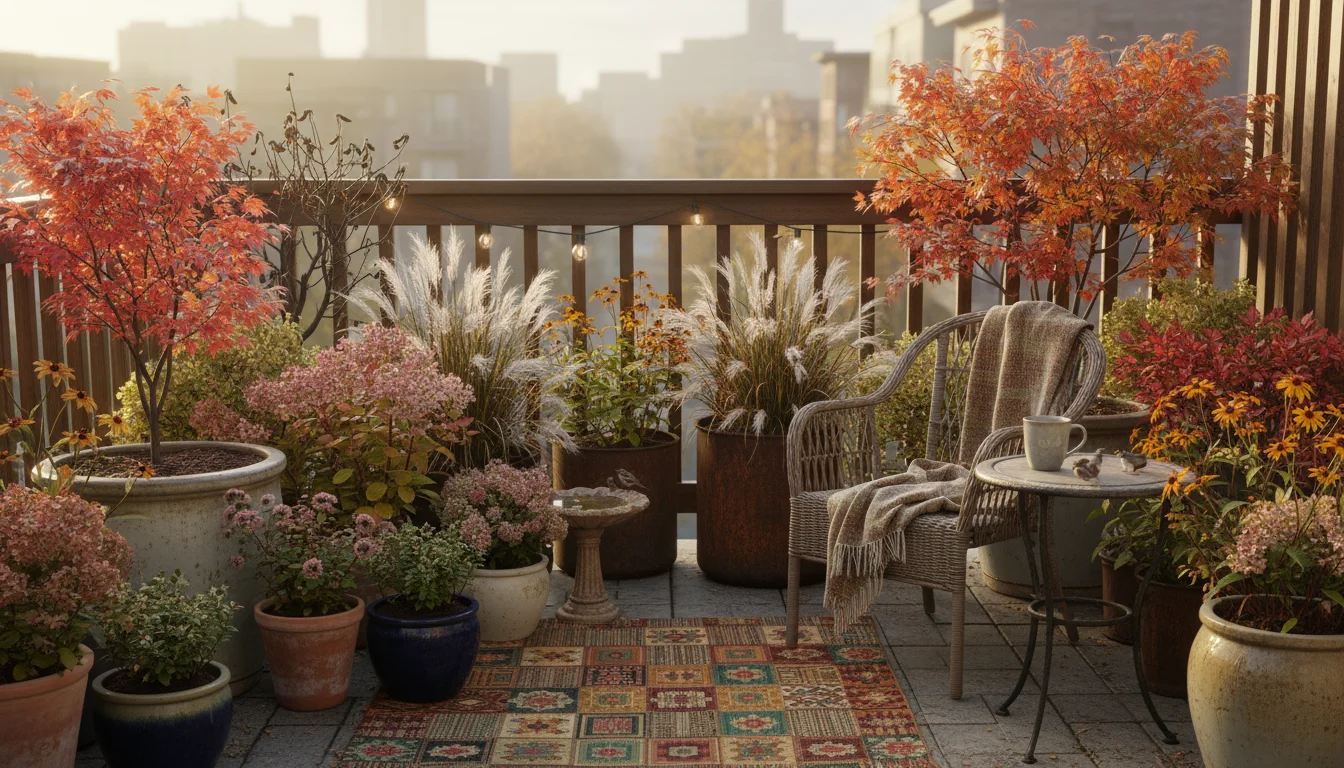
Embracing Fall’s Fading Beauty in Your Small Space
For gardeners in compact settings, every plant choice holds significant weight. You want plants that perform well, look beautiful, and do not demand constant attention. The idea of selecting plants specifically for their dried appearance in fall garden design represents a smart, forward-thinking approach. This is not about letting plants die neglected; it is about recognizing and valuing the inherent beauty in their natural progression. As leaves change color, flowers dry, and seed heads develop, these plants transition from their vibrant summer glory to a more muted, sculptural elegance. This transformation extends your garden’s visual appeal well past the first frost, providing continuous interest. Consider a quiet autumn morning where your pots, once bursting with blooms, now display intricate silhouettes and soft, earthy tones. This creates a peaceful, reflective atmosphere, transforming your space into a sanctuary of natural beauty. This careful selection ensures your containers remain integral to your outdoor living area, offering a sustained aesthetic pleasure that traditional annuals simply cannot match.
This strategy is particularly beneficial for container gardeners. Limited space means you cannot always rely on large shrubs or trees for winter structure. Potted plants that look good dead in winter pots become your essential building blocks for maintaining visual appeal. They provide form, texture, and a connection to nature throughout the colder months. You will find that these plants often require less water and attention once they enter their dormant or semi-dormant phase, freeing up your time and resources. This approach allows you to step back and appreciate nature’s artistry without feeling the pressure to constantly refresh your containers. You are designing a garden that truly thrives through the seasons, a testament to thoughtful, sustainable practices.
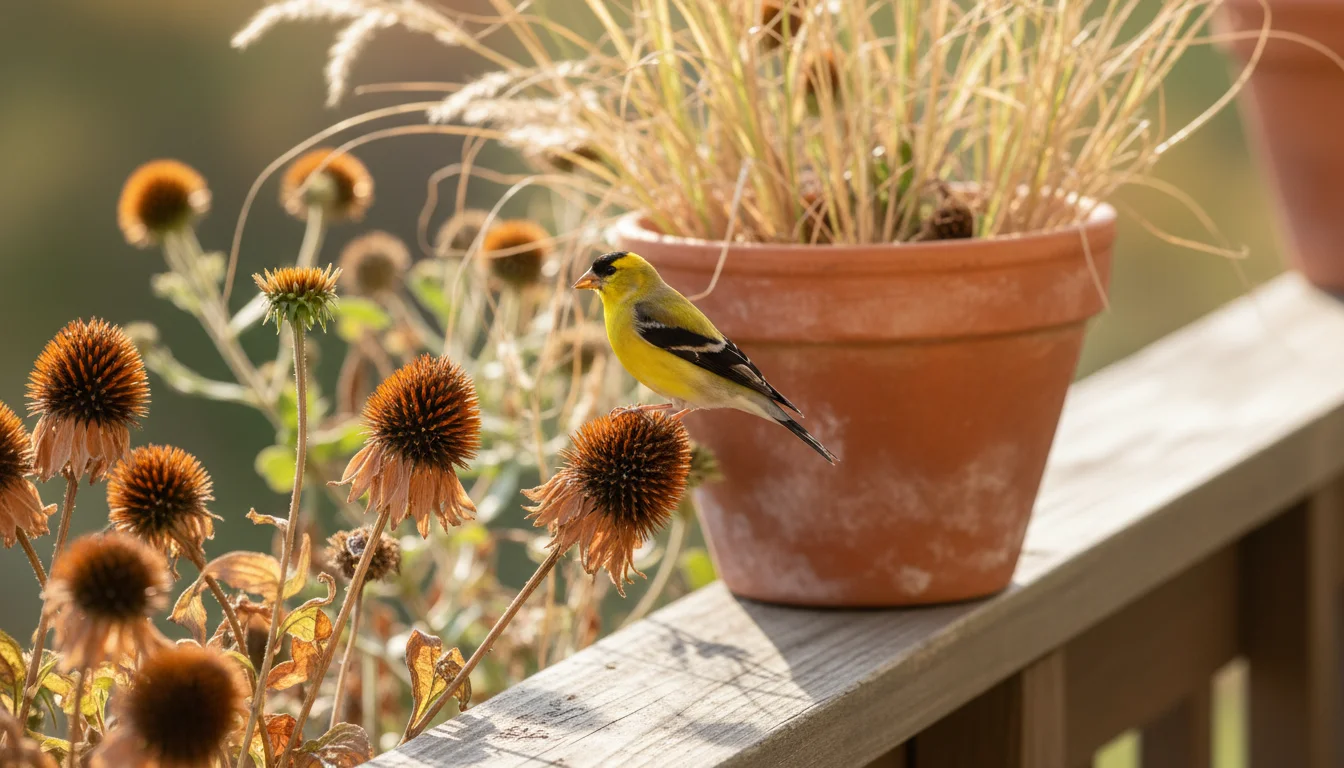
Why Leaving Plants to Fade Offers More Than Meets the Eye
Choosing plants for their graceful fade provides multiple benefits beyond mere aesthetics. This practice aligns perfectly with environmentally conscious gardening principles, enhancing biodiversity and reducing waste. First, leaving seed heads for winter interest provides a crucial food source for birds. Finches, sparrows, and other overwintering birds rely on these seeds when other food becomes scarce. Your container garden, even a small one, can become a vital pit stop for these creatures, adding life and movement to your winter landscape. Imagine watching a flock of goldfinches busily extracting seeds from your dried coneflowers; it is a rewarding sight that connects you directly to the natural world.
Second, the dried stalks and foliage offer shelter for beneficial insects. Ladybugs, lacewings, and other helpful garden allies seek refuge in plant debris during winter. By not cutting back everything immediately, you provide safe havens for these insects, which in turn help control pests in your garden next spring. This contributes to a healthier, more resilient ecosystem right in your pots. Third, this low maintenance approach conserves resources. You reduce the need for constant replanting, buying new soil, and discarding spent plants. This saves money and lessens your environmental footprint. It is a form of sustainable gardening that respects the plant’s full life cycle and minimizes human intervention.
Finally, these plants offer unique textural elements that are impossible to replicate with fresh blooms. The intricate patterns of dried seed heads, the delicate rustle of dried ornamental grass plumes, and the architectural forms of spent perennial stalks create a dynamic and sophisticated visual display. This adds depth and character to your fall garden design, inviting closer inspection and appreciation. You transform your balcony or patio into a space that celebrates the subtle beauty of the changing seasons, not just the fleeting vibrancy of summer.

Container Garden Aesthetics: Designing for Extended Interest
Designing your container garden for year-round appeal requires a shift in perspective. Instead of focusing solely on peak bloom, consider the plant’s entire life cycle, especially its fall and winter presentation. This approach elevates your container garden aesthetics, creating a sophisticated and enduring display. When selecting pots, prioritize materials that can withstand winter temperatures without cracking, such as terracotta, ceramic, or concrete, which are prone to damage from freezing and thawing cycles. Instead, opt for durable, frost-resistant materials like fiberglass, heavy-duty plastic, or glazed ceramic. The size of your pots also matters; larger containers offer better insulation for roots and a more stable environment for perennials to overwinter, while also making a bolder visual statement.
Consider the interplay of textures and forms. Combine plants with upright, architectural seed heads alongside those with airy, feathery plumes or broad, dried foliage. For example, the stiff, dark cones of coneflowers create a strong vertical element, beautifully contrasted by the wispy, light-catching plumes of an ornamental grass. Grouping containers of varying heights and sizes adds dimension and visual interest. Place taller pots towards the back or center, with shorter ones at the front, creating a layered effect. You can also incorporate inanimate elements like decorative stones, small logs, or weather-resistant sculptures to complement the natural textures of your dried plants. This thoughtful arrangement creates a cohesive and engaging display, ensuring that even as the plants fade, your garden remains a focal point.
Color, even in its absence, plays a role. The muted tones of dried plants—beiges, browns, silvers, and rusty reds—create a serene palette that harmonizes with the cool colors of autumn and winter skies. These subtle hues allow the unique forms of each plant to stand out. When planning your arrangement, think about how light will interact with the dried plants. Backlighting can dramatically highlight the delicate structures of seed heads and grass plumes, creating stunning silhouettes against the setting sun or a snowy backdrop. This focus on form, texture, and subtle color ensures your low maintenance fall balcony decor is captivating and enduring.
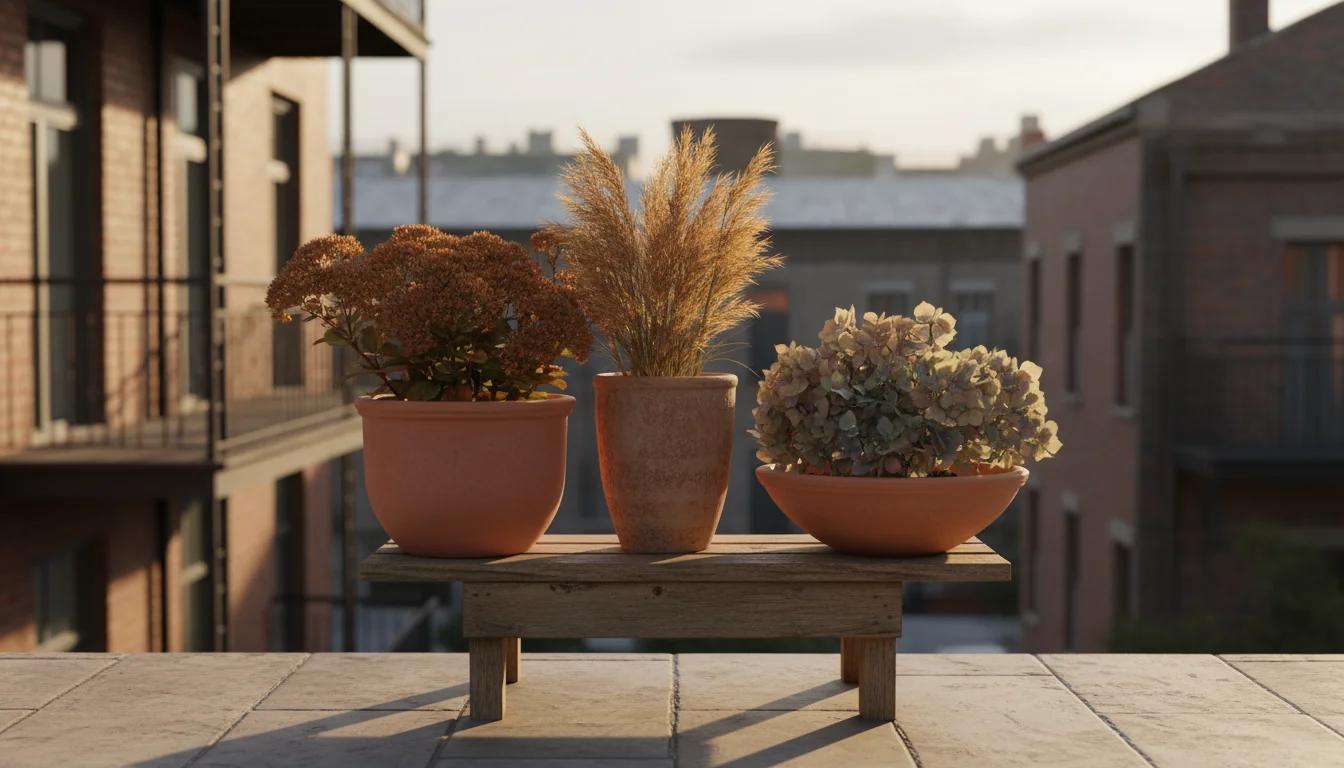
Top 5 Potted Plants for Stunning Fall and Winter Displays
Choosing the right plants is key to a container garden that retains its beauty through the colder months. Here are five exceptional potted plants that look stunning as they fade and dry in winter pots, each offering unique forms and textures for compelling fall garden design.
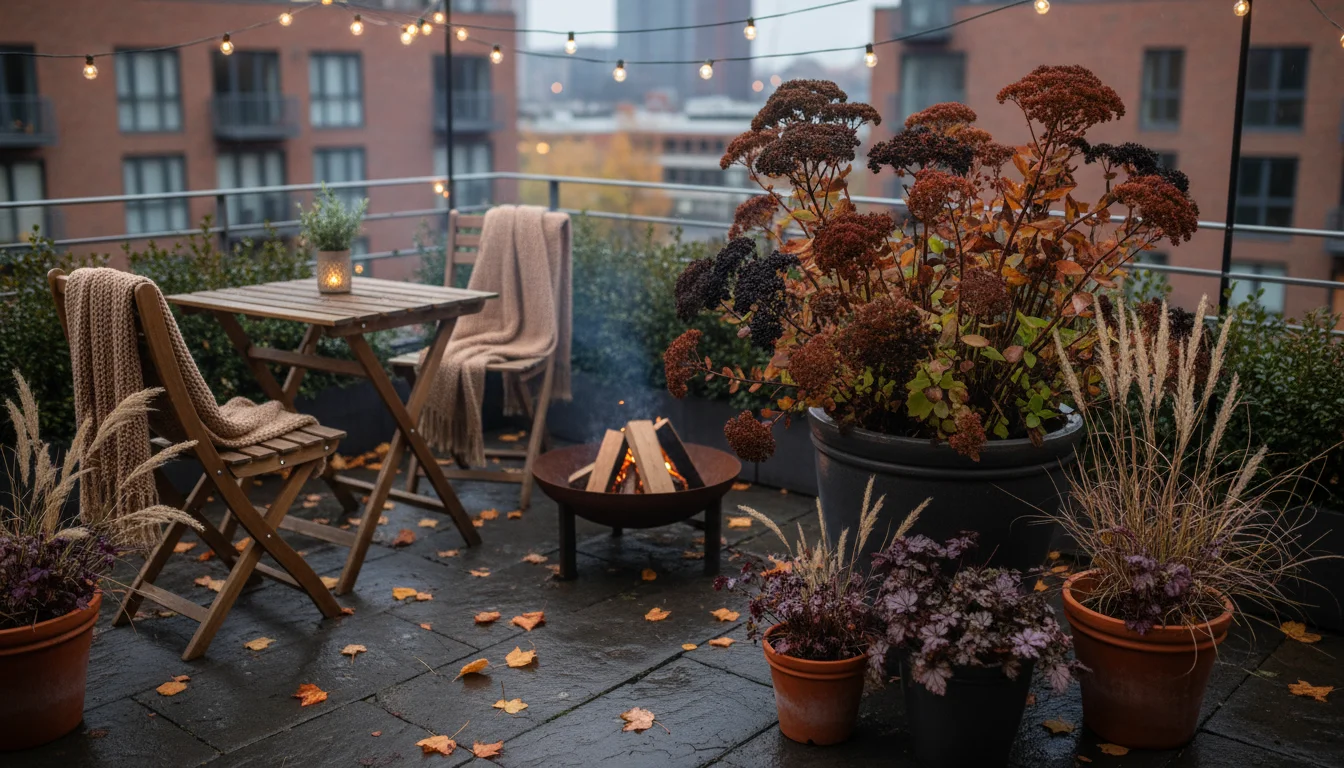
1. Sedum (Stonecrop)
Sedums, particularly taller varieties like ‘Autumn Joy’ or ‘Autumn Fire’, are champions of fall garden design. In summer, they produce dense clusters of pink, red, or rust-colored flowers that attract pollinators. As autumn progresses, these flower heads gradually dry and deepen in color, turning magnificent shades of coppery-brown, deep russet, or even almost black. The sturdy stems remain upright, holding the dried flower heads well above the foliage, creating a striking, architectural display. These dried flower heads are incredibly resilient, standing up to snow and ice, and providing excellent winter interest plants for months. Their robust structure and intriguing texture add significant weight and visual interest to containers, especially when combined with other fine-textured plants. Sedums are also incredibly drought-tolerant and thrive on neglect, making them perfect for low maintenance fall balcony decor. Ensure your pot provides excellent drainage, meaning water moves freely through the soil and out the bottom, preventing root rot. A sandy or gritty potting mix works best for sedums. You can leave the dried flower heads on through winter and cut them back in early spring just as new growth emerges, providing food for birds throughout the coldest months.
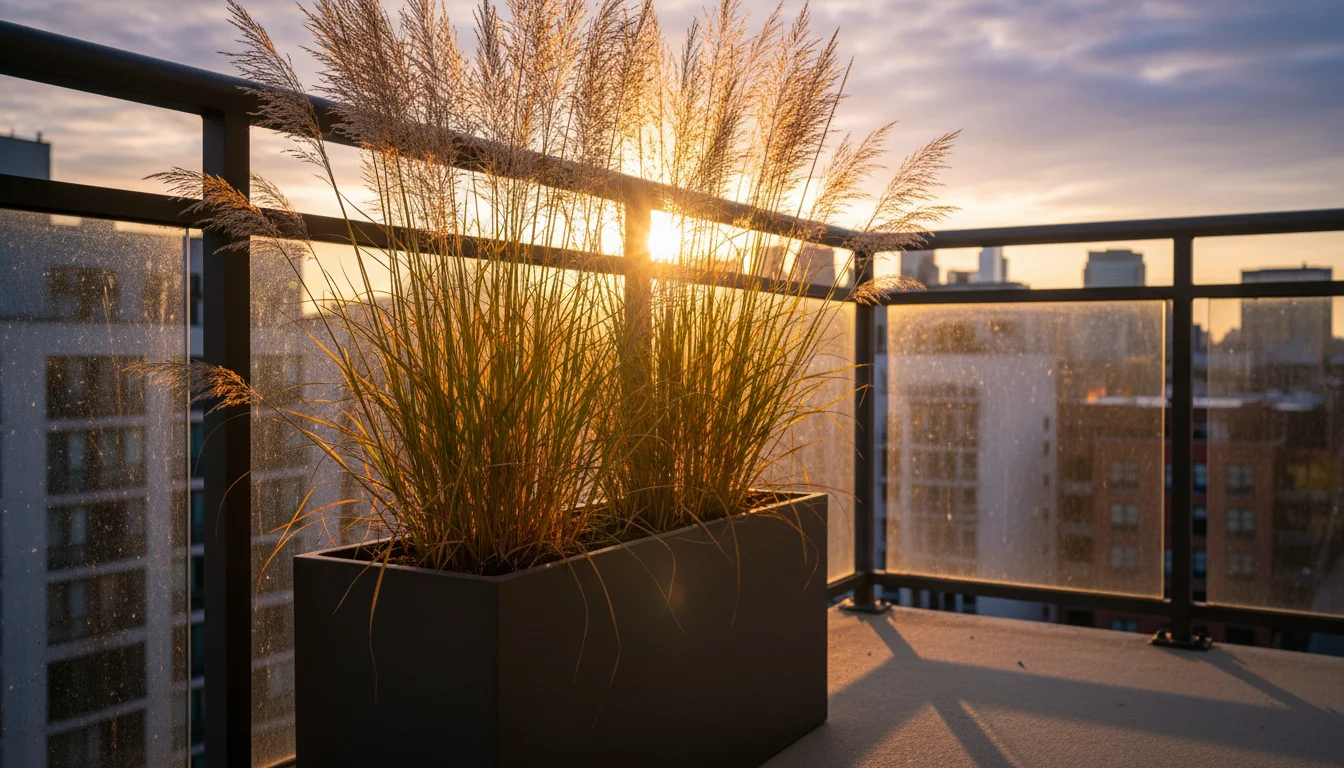
2. Ornamental Grasses
Ornamental grasses are indispensable for their dynamic movement, texture, and incredible winter interest. Varieties such as ‘Karl Foerster’ Feather Reed Grass (Calamagrostis acutiflora ‘Karl Foerster’) or Fountain Grass (Pennisetum alopecuroides) are excellent choices for containers. Throughout summer, they offer graceful foliage and develop feathery plumes that sway in the breeze. As fall arrives, the foliage typically turns to golden, coppery, or bronze hues, while the plumes dry into shimmering, straw-colored spikes or soft, bottle-brush forms. These dried plumes are spectacular when backlit by the low autumn and winter sun, catching the light and creating a magical glow. They add height, airiness, and a sense of wild elegance to any pot. Ornamental grasses are generally very low maintenance, requiring minimal watering once established and often staying upright through heavy snow. Their rustling sounds in the wind also add an auditory dimension to your fall garden design. Choose a container large enough to accommodate their root ball and allow for some growth, as they appreciate space. A good quality potting mix with adequate drainage will keep them happy. Do not cut them back until late winter or early spring to enjoy their full winter beauty and provide habitat for overwintering insects.
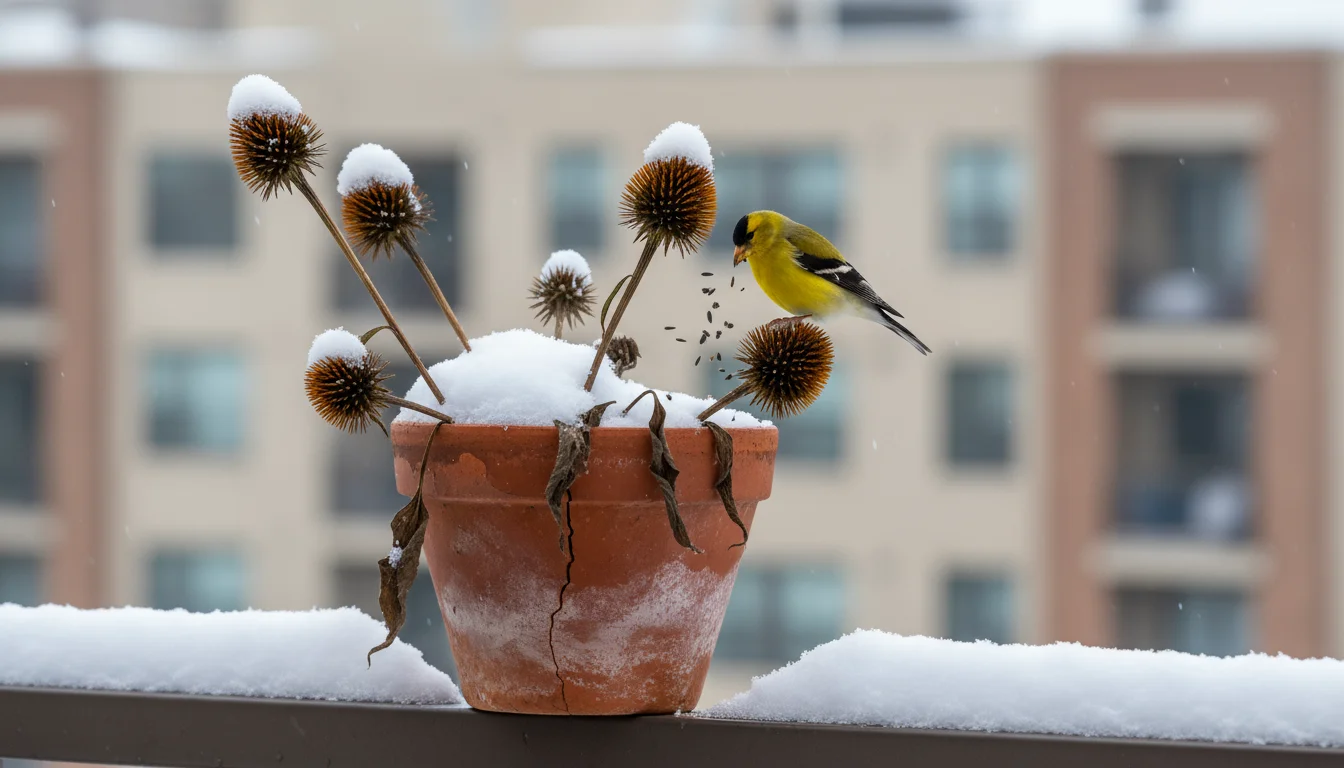
3. Echinacea (Coneflower)
Echinacea, with its iconic daisy-like flowers, is a beloved perennial that truly shines in its dried form. Varieties with strong, sturdy stems, such as ‘Magnus’ or ‘PowWow Wild Berry’, are ideal for containers. After their vibrant pink, purple, or white petals fade and drop in late summer and early fall, they leave behind prominent, spiky central cones. These dark, architectural seed heads stand tall and provide outstanding winter interest plants. They offer a stark, structural beauty, especially against a snowy backdrop, and contrast beautifully with the softness of dried grasses. Moreover, these seed heads are a favorite food source for goldfinches and other seed-eating birds throughout the fall and winter, embodying the spirit of leaving seed heads for winter interest. Echinacea prefers full sun and well-draining soil. Ensure your pot has drainage holes and use a general-purpose potting mix. While the flowers are fading, you can deadhead some to encourage rebloom, but consciously leave many to develop into those valuable seed heads for your fall and winter display. Cut them back only when they start to break down or when new spring growth appears at the base.

4. Rudbeckia (Black-eyed Susan)
Rudbeckia hirta, or Black-eyed Susan, is another fantastic choice for container garden aesthetics that extends into the colder months. Its cheerful yellow petals surrounding a dark brown central cone are a staple of summer and early fall gardens. As the season progresses, the yellow petals fall away, leaving behind the prominent, dark, button-like seed heads. These dried cones are incredibly resilient and retain their shape and color well into winter, creating a striking contrast against paler foliage or snow. They add a rustic charm and provide excellent vertical interest in pots. Like Echinacea, Rudbeckia’s seed heads are a valuable food source for birds, particularly finches, making them perfect for those prioritizing leaving seed heads for winter interest. Rudbeckia thrives in full sun and prefers consistently moist, well-draining soil. Ensure proper drainage in your container to prevent waterlogging. While some varieties are annuals, many are short-lived perennials or self-seeding, meaning they might return or drop seeds for new plants. Allow the seed heads to remain on the plant until late winter or early spring to maximize their visual and ecological benefits.

5. Salvia (Perennial Sages)
While many salvias are admired for their vibrant summer flowers, certain perennial varieties offer beautiful dried flower spikes that persist through fall and into winter, contributing significantly to container garden aesthetics. Varieties like Salvia nemorosa ‘Caradonna’ or ‘May Night’ produce abundant spires of purple-blue flowers. As these flowers fade, the dark calyxes (the leafy cup that holds the flower) and dried flower stalks remain, creating elegant, dark, linear forms. These dried spikes provide strong vertical accents and textural contrast, especially when grouped with broader-leaved plants or airy grasses. The deep, almost black stems and persistent flower remnants offer a sophisticated, understated beauty that enhances fall garden design. They are also incredibly resilient and generally unaffected by light frosts. Salvia prefers full sun and well-draining soil. Plant them in a pot with good drainage and a general-purpose potting mix. To encourage a second flush of blooms, you can trim spent flower spikes in mid-summer, but leave the late-season spikes to dry on the plant for extended winter interest. These dried forms require minimal effort, making them excellent choices for low maintenance fall balcony decor.
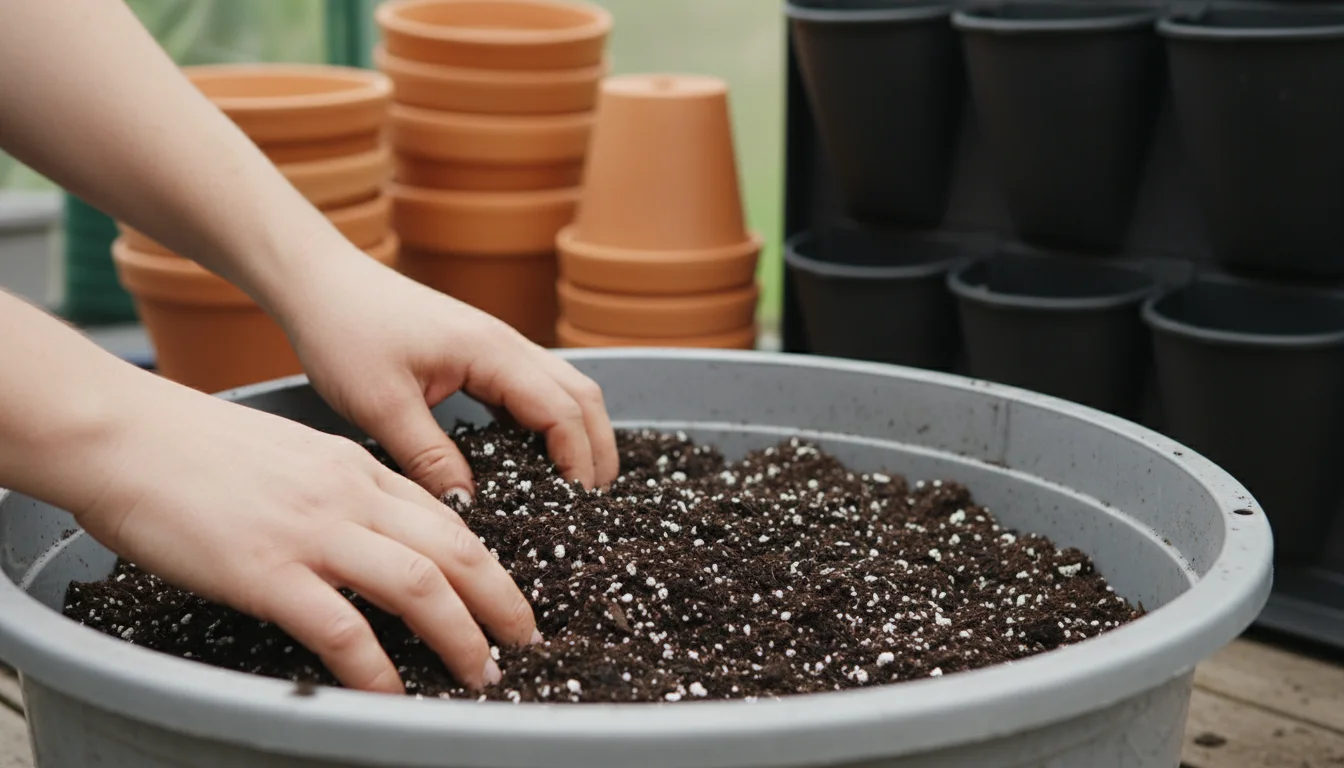
Cultivating Your Container Garden for Winter Interest
Successfully transitioning your container garden for winter interest involves a few practical steps to ensure your chosen plants not only survive but continue to thrive and provide beauty. Proper cultivation ensures your plants maintain their structure and visual appeal long after their vibrant growing season has passed. First, choose the right potting mix. A high-quality, well-draining potting mix is crucial. Good drainage means water moves through the soil easily and exits the container, preventing roots from sitting in soggy conditions, which can lead to rot, especially in colder temperatures. Avoid heavy garden soil in pots, which compacts easily and retains too much moisture. A mix with perlite or coarse sand improves aeration and drainage significantly.
Watering practices change dramatically in fall and winter. As temperatures drop and plants enter dormancy or semi-dormancy, their water needs decrease. Overwatering in cold weather is a common mistake and can quickly lead to root rot. Feel the soil; if the top inch or two is dry, then water thoroughly until water drains from the bottom. This might mean watering only once every few weeks, or even less, depending on your climate and rainfall. Always check before you water. Protecting your pots from harsh winter elements is another key consideration. In very cold climates, terracotta or ceramic pots can crack due to the freeze-thaw cycle. You can protect them by wrapping them in burlap, bubble wrap, or moving them into a sheltered spot, such as against a warm wall, under an overhang, or into an unheated garage or shed. For plants that are marginally hardy in your zone, consider providing extra insulation for their roots by grouping pots together or placing them in larger decorative containers.
Finally, the most important step for achieving winter interest is simply leaving seed heads for winter interest. Resist the urge to clean up your garden too aggressively in the fall. Allow those spent flowers, dried foliage, and mature seed heads to remain on the plants. This is the entire point of selecting these specific plants. Not only do they provide the stunning visuals we discussed, but they also offer invaluable ecological benefits by feeding birds and sheltering beneficial insects. You will prune them back in late winter or early spring, just before new growth begins, ensuring a fresh start for the next growing season while maximizing the natural beauty and ecological function of your low maintenance fall balcony decor throughout the colder months.

Common Mistakes to Avoid for a Picture-Perfect Fall Display
Even with the best intentions, some common pitfalls can detract from your container garden’s fall and winter charm. Avoiding these mistakes ensures your plants make a truly graceful exit. One prevalent error is premature cutting back. It is tempting to “clean up” your garden as soon as summer ends, but doing so too early removes all the potential for winter interest. If you cut back your coneflowers or ornamental grasses in early fall, you eliminate the very structures that provide visual appeal and wildlife benefits. Resist the urge to snip until late winter or early spring, when new growth is just beginning to emerge. This allows the plants to stand tall through the cold months, offering their dried beauty and serving as a food source and habitat. Patience is a virtue in designing for fall garden design.
Another mistake is neglecting drainage in your pots. While plants need less water in winter, they still need proper drainage. A container without adequate drainage holes or one filled with compacted soil will quickly become waterlogged, especially during heavy rains or snowmelt. This constant moisture, combined with cold temperatures, leads to root rot, which will kill your plants and leave you with a soggy, unappealing mess. Always ensure your pots have sufficient drainage holes, and use a well-aerated potting mix. If a container seems to be holding too much water, consider repotting it with a better mix or adding more drainage material to the bottom.
Overcrowding pots is also a common issue, particularly for small-space gardeners trying to maximize their planting. While grouping plants can be effective, too many plants in one pot can lead to competition for resources and poor air circulation. In fall and winter, this can make plants more susceptible to fungal diseases or simply look messy as they fade. Give each plant enough space to show off its unique form, both in its green state and its dried version. This helps maintain distinct lines and textures, enhancing your container garden aesthetics. Finally, neglecting the aesthetic impact of the container itself can undermine your efforts. A beautiful plant in a chipped, faded, or inappropriate pot will not achieve the desired effect. Choose containers that complement your plants and your overall outdoor decor, paying attention to color, texture, and size to create a cohesive and attractive display.
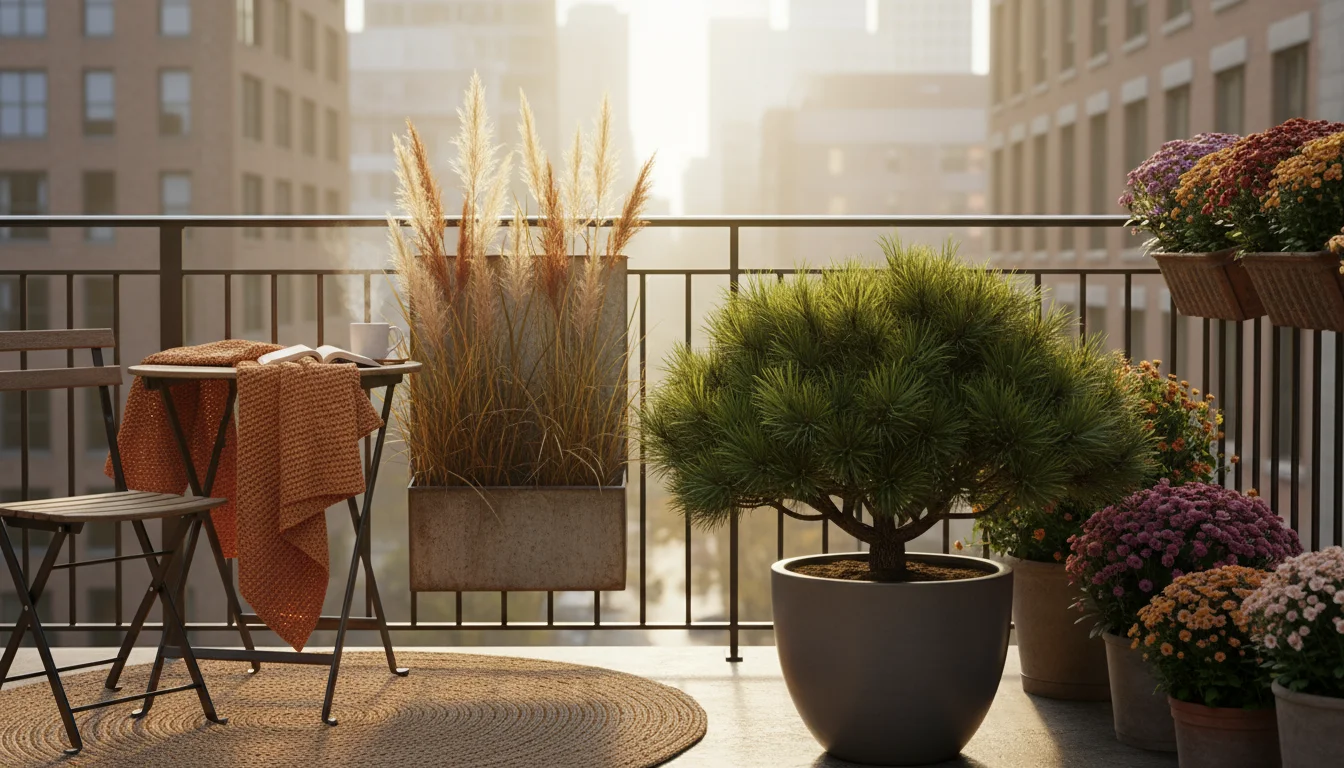
Extending Your Garden’s Season with Low Maintenance Fall Balcony Decor
Creating a beautiful fall garden design in your small space involves more than just selecting the right plants. It also means incorporating other elements that enhance the overall atmosphere and provide continuous visual delight with minimal effort. This approach elevates your low maintenance fall balcony decor, making it a truly inviting space throughout the colder months. Consider using hardy evergreen plants in conjunction with your fading perennials. Small evergreen shrubs or dwarf conifers in separate pots can provide a vibrant green backdrop that contrasts beautifully with the muted tones and structural forms of your dried plants. Their consistent color offers a sense of life and vibrancy even when everything else is dormant, creating an engaging visual dynamic for your container garden aesthetics.
Seasonal accents can also play a significant role. Incorporate natural elements such as gourds, mini pumpkins, pinecones, or decorative branches into your display. These items add autumnal charm and can be easily swapped out as the season progresses. Think about how textures and colors from these natural accents can complement the dried forms of your plants. A few strategically placed items can tie your entire display together, making it feel more intentional and complete. You can also add subtle lighting, such as solar-powered fairy lights wrapped around a pot or flameless LED candles nestled among your plants. These create a warm, inviting glow during the shorter days and longer nights, transforming your balcony or patio into a cozy retreat.
Sustainable practices extend beyond just leaving seed heads for winter interest. Consider collecting fallen leaves from nearby trees to use as mulch in your pots. This not only insulates plant roots from temperature fluctuations but also slowly breaks down, enriching the soil. You are essentially creating a mini ecosystem in your containers, mimicking natural processes. By combining resilient plants with thoughtful decorative elements and eco-friendly practices, you create a garden that is not only visually stunning but also harmonious with nature and incredibly easy to maintain. Your outdoor space becomes a year-round haven, offering beauty and solace no matter the season, all while emphasizing winter interest plants and practical solutions for small spaces.
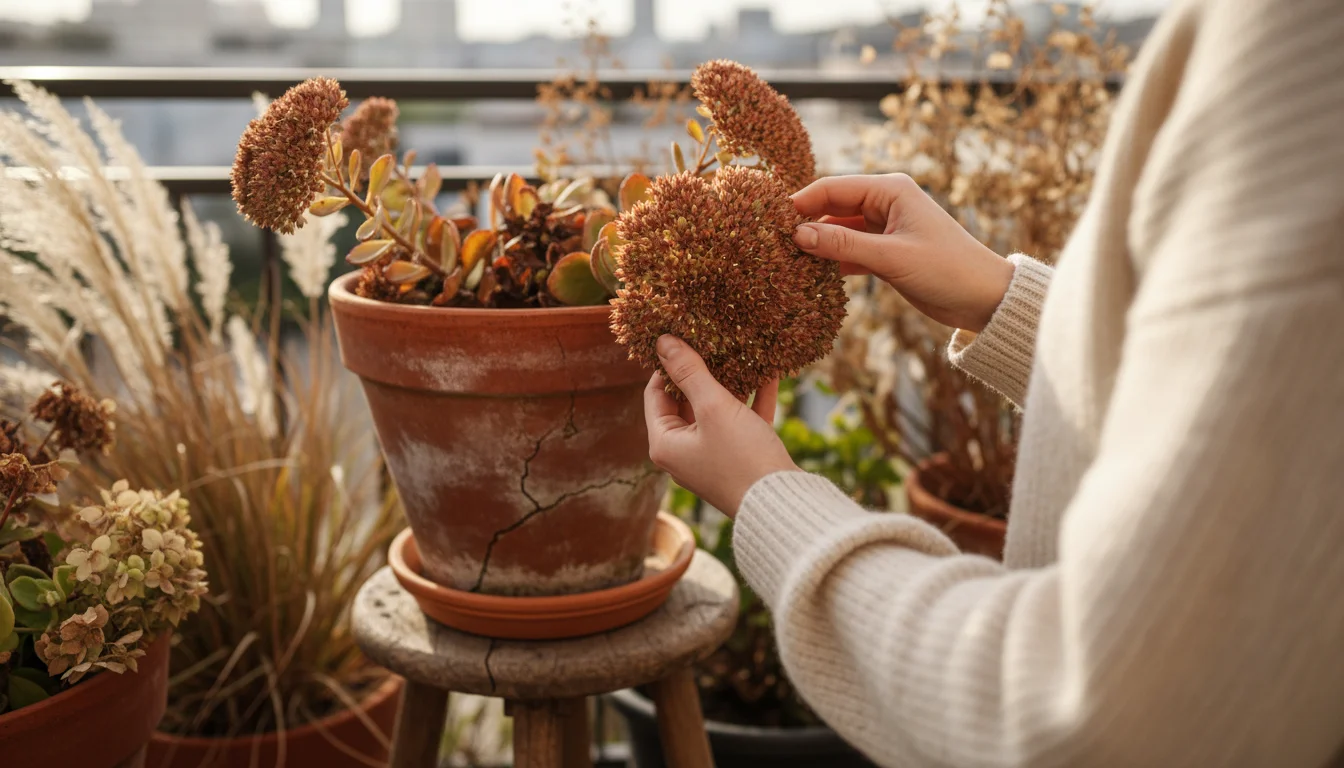
Frequently Asked Questions
Can I leave all my potted plants out through winter?
No, not all potted plants can withstand winter outdoors. While this article focuses on specific perennials that thrive when left to fade, most annuals will die with the first hard frost and should be removed. Tropical plants or tender perennials require protection indoors or in a sheltered, unheated space once temperatures drop below their tolerance. Always research the specific hardiness zone for each plant you intend to leave out.
When is the best time to cut back plants that have faded for winter interest?
The ideal time to cut back these plants is in late winter or early spring, just before new growth begins to emerge. This allows you to enjoy their architectural beauty throughout the colder months and provides crucial food and shelter for wildlife. Cutting back too early removes these benefits. Wait until the threat of severe frost has passed and you see signs of new life at the base of the plant.
Do I need to fertilize my potted plants in the fall or winter?
Generally, you should stop fertilizing most potted plants in late summer or early fall. Fertilizing encourages new growth, which is tender and susceptible to frost damage. As plants enter dormancy, they do not need additional nutrients. Resume a regular feeding schedule in spring when active growth resumes. Focus on providing good drainage and occasional water during the colder months.
How do I protect my terracotta or ceramic pots from cracking in winter?
Terracotta and unglazed ceramic pots are porous and absorb water, which can freeze and expand, causing cracks. To protect them, move them to a sheltered location, like a covered porch or unheated garage, if possible. You can also wrap them in burlap or bubble wrap for insulation. Alternatively, use frost-resistant containers made from fiberglass, glazed ceramic, or heavy-duty plastic for winter displays.
Will leaving dried plants in pots attract pests or diseases?
Leaving healthy, dried plants and seed heads typically does not attract pests or diseases more than fresh plant material. In fact, it often provides shelter for beneficial insects that help control pests. However, remove any plant material that shows signs of active disease or heavy insect infestation during the growing season to prevent it from overwintering. A clean fall garden, in terms of diseased material, is important; otherwise, leaving healthy dried material is beneficial.
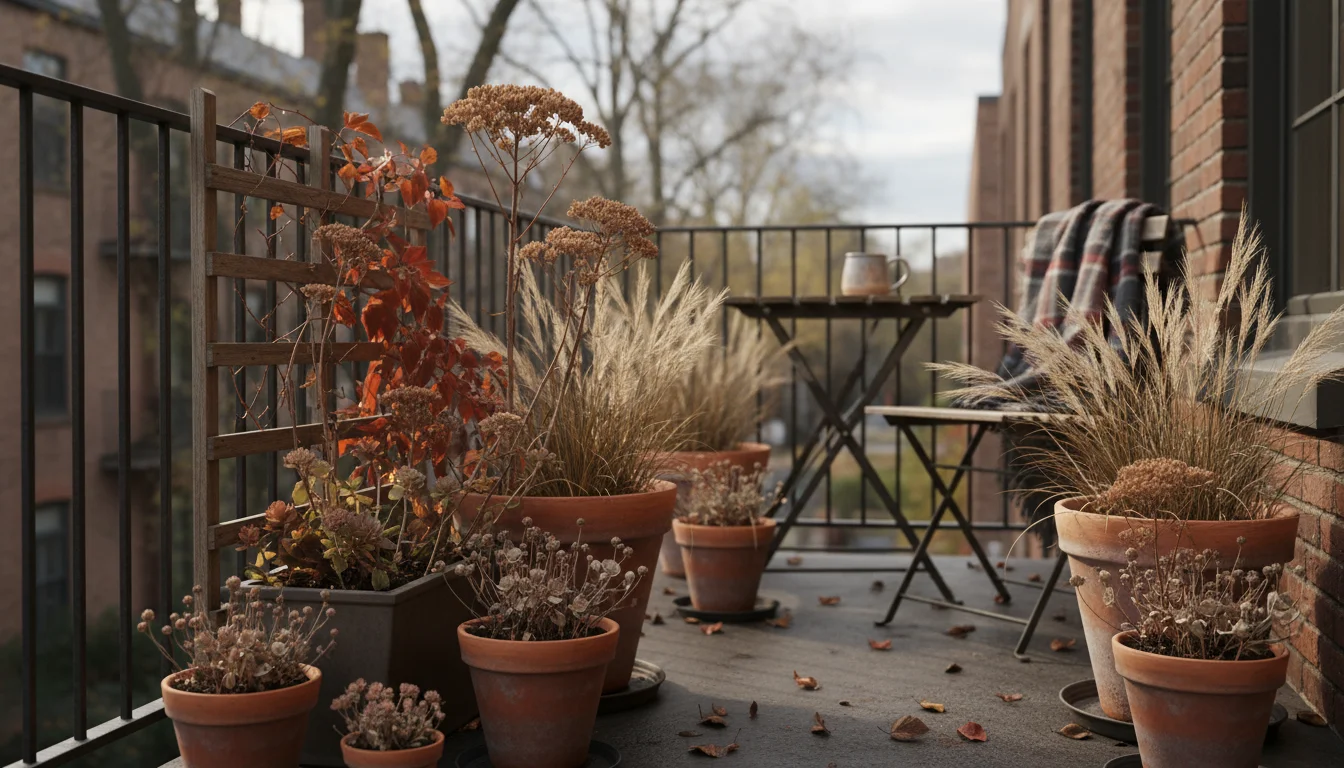
Final Thoughts on Your Year-Round Garden
Embracing the graceful exit of your potted plants transforms your small space into a dynamic, engaging garden that celebrates the entire cycle of nature. By choosing plants that look stunning as they fade and dry, you unlock a season of extended beauty, texture, and ecological contribution. This mindful approach to fall garden design offers practical advantages: reduced maintenance, less waste, and a deeper connection to the natural world. Your balcony, patio, or small yard becomes a testament to thoughtful, sustainable container garden aesthetics, proving that beautiful winter interest plants do not require endless effort or constant refreshing.
You now possess the knowledge to select and cultivate plants that deliver sustained visual impact, provide crucial resources for wildlife, and enhance your outdoor living area through every season. Let go of the need for perpetual summer blooms and instead, revel in the subtle charm and quiet resilience of a garden that embraces its natural progression. Your low maintenance fall balcony decor will not only be a source of personal joy, but also a small, vibrant ecosystem contributing to a healthier environment. Enjoy the enduring beauty of your year-round garden.
For trustworthy gardening information, visit:
Penn State Extension — Trees, Lawns and Landscapes, Clemson University Extension — Home & Garden, Colorado State University Extension — Gardening and North Carolina State Extension — Gardening. These organizations provide expert, research-based advice for gardeners at all levels.
Disclaimer: This article is for informational purposes only and is not a substitute for professional gardening advice. Always consult local extension services or horticulture experts for region-specific guidance.
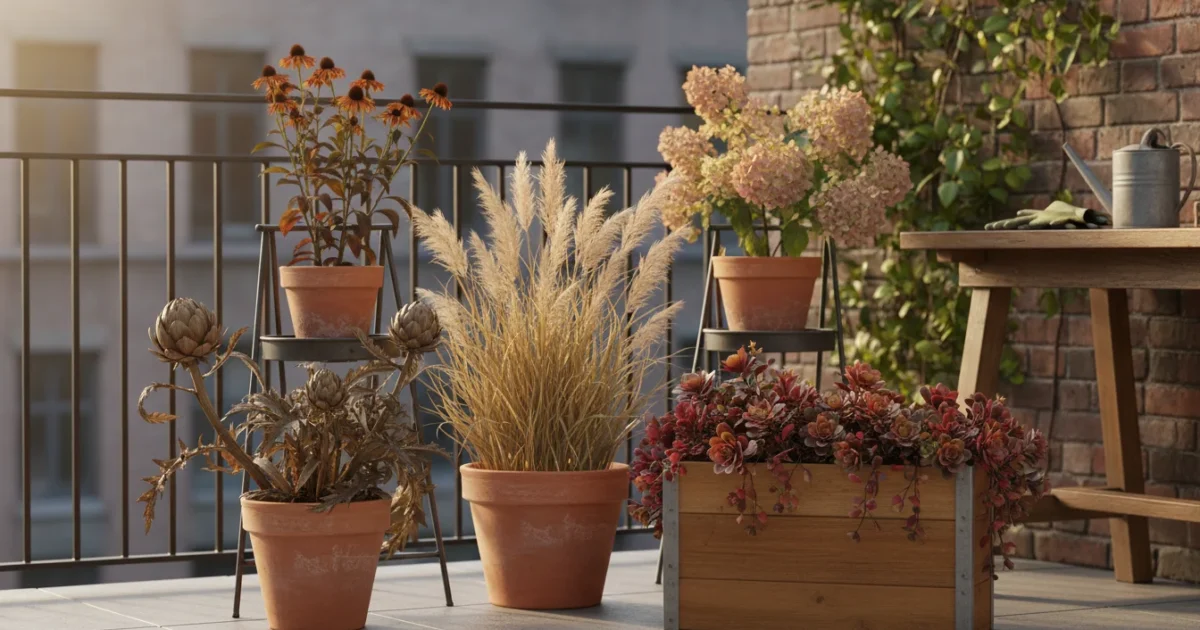
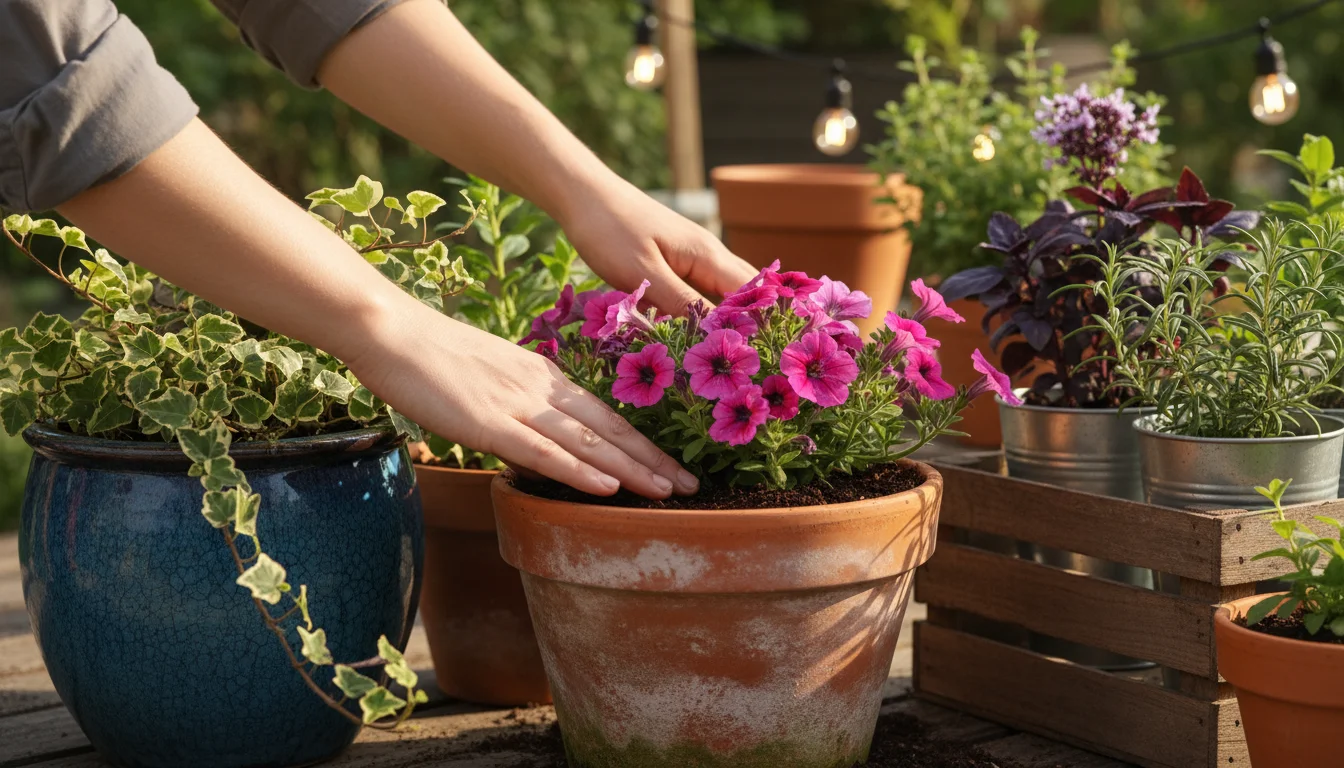

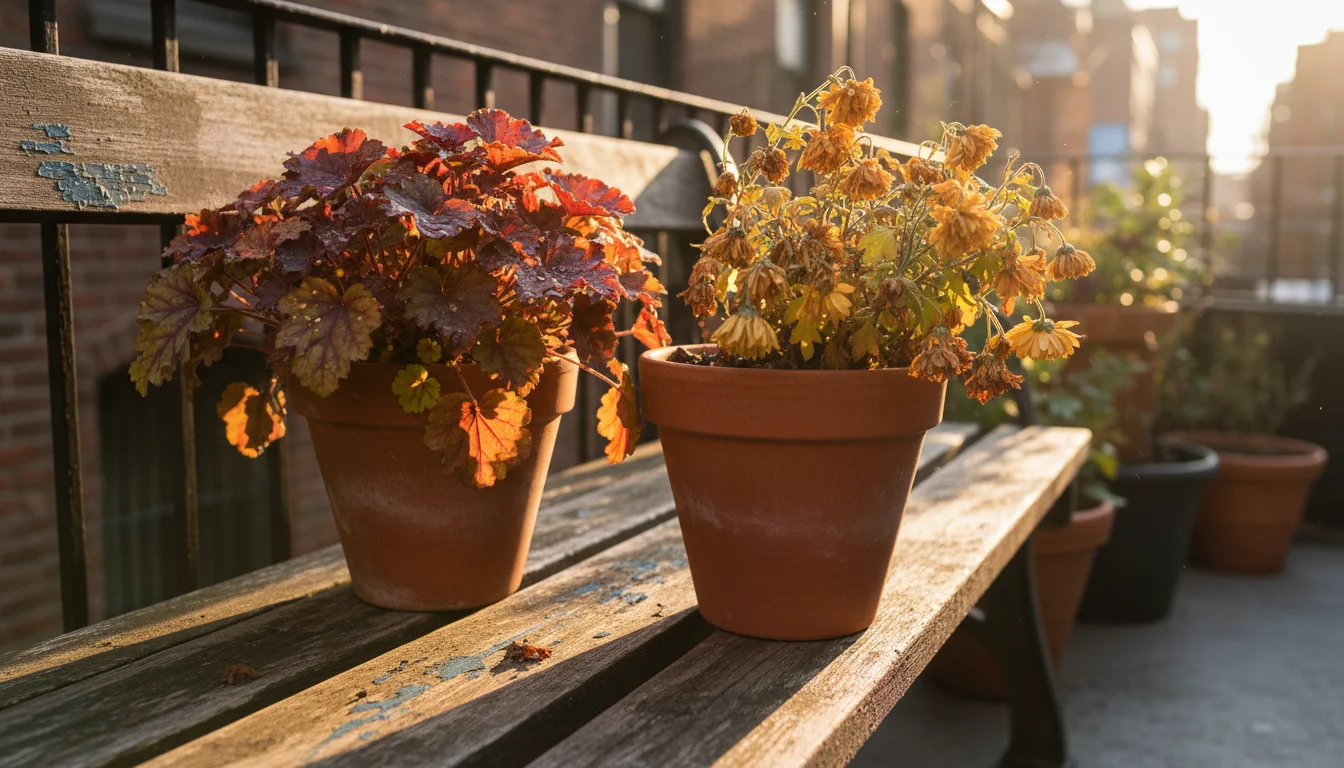
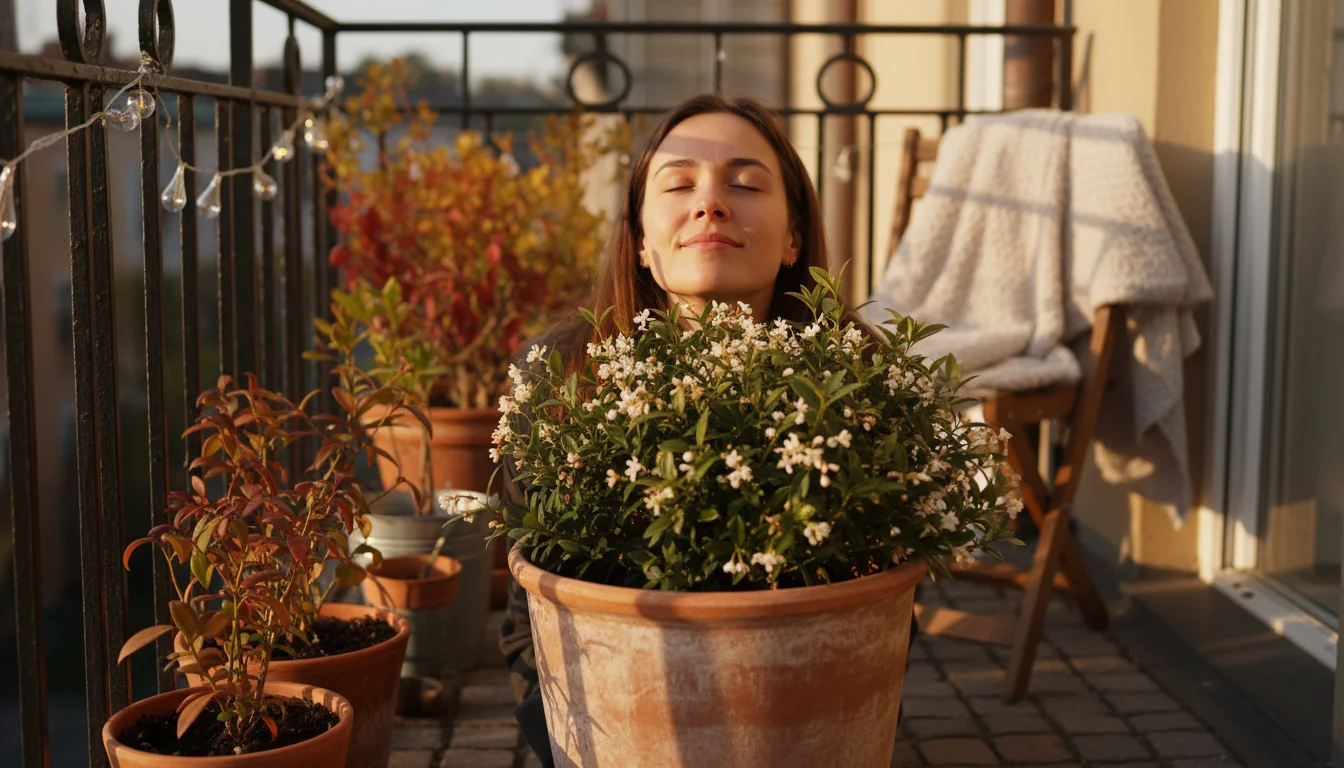
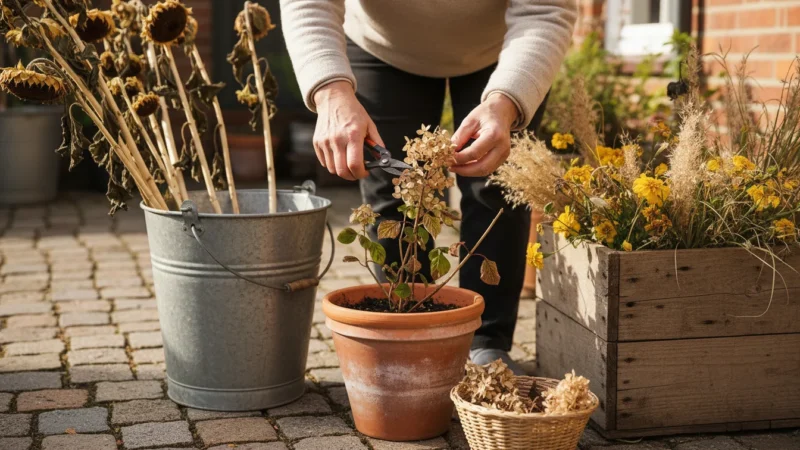

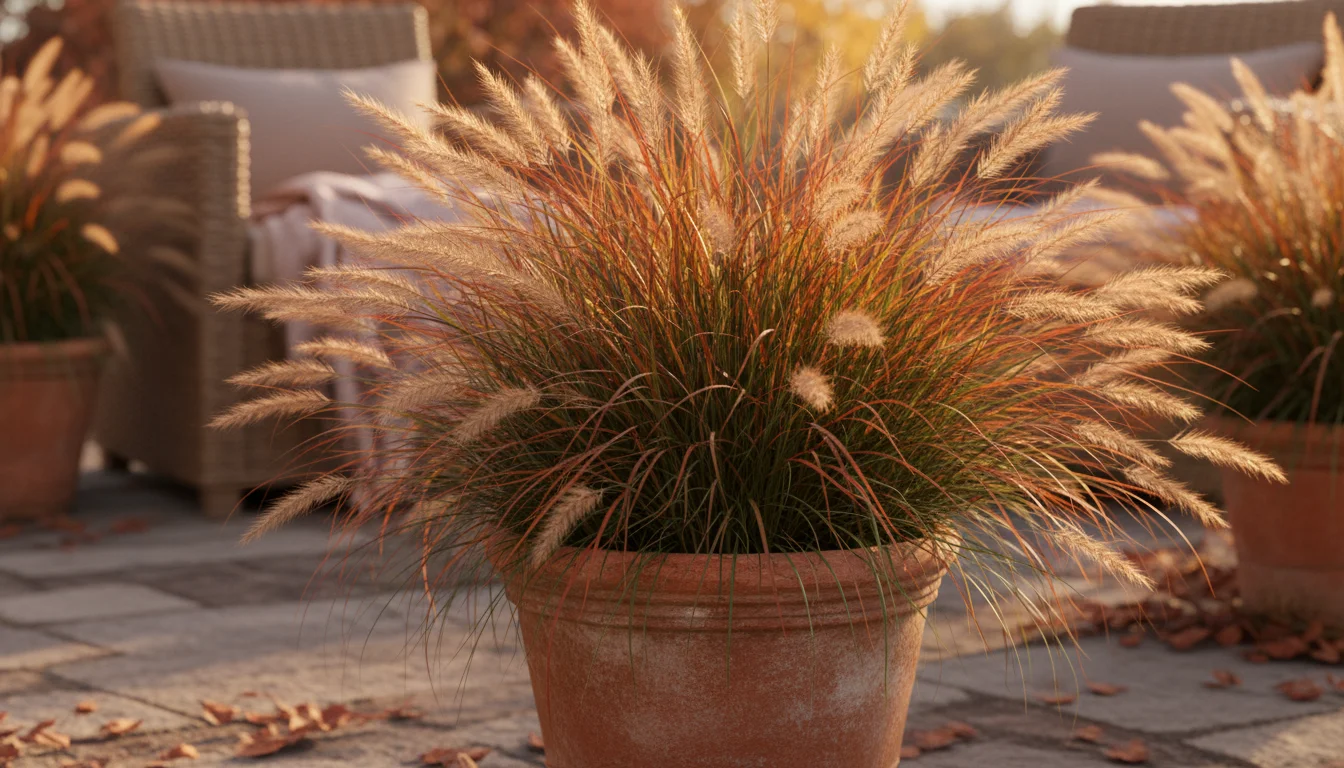
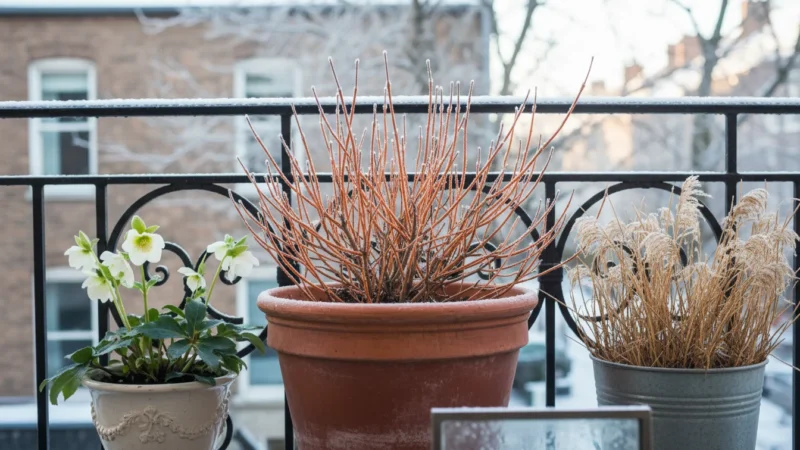

Leave a Reply